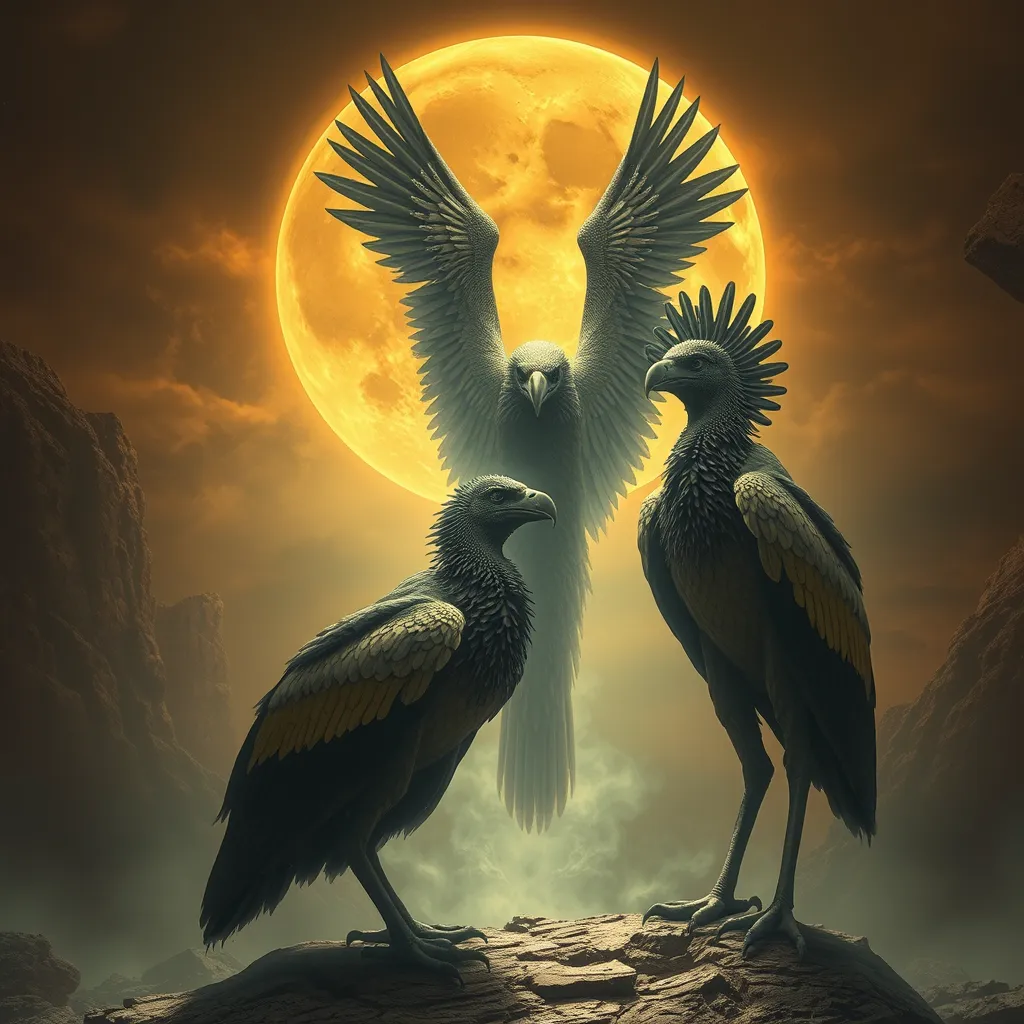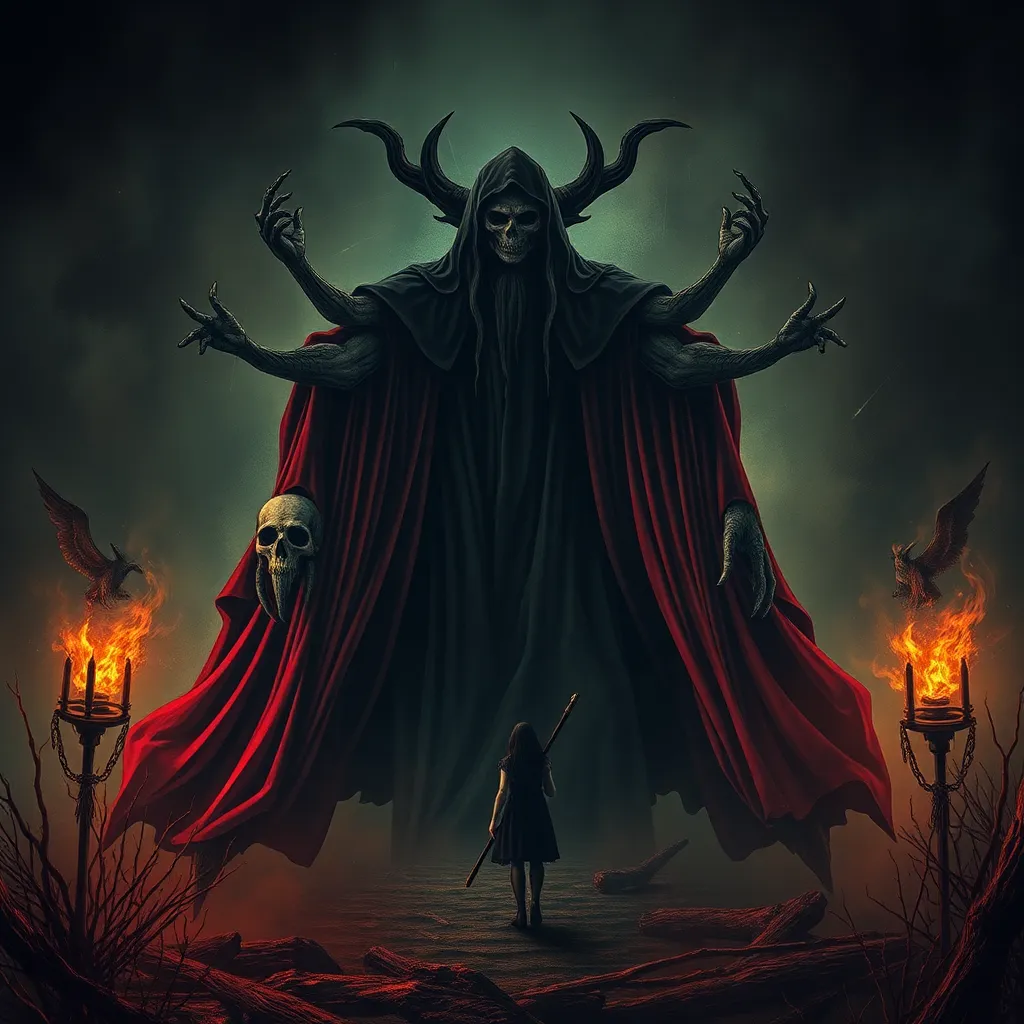The Vulture Goddesses of Egypt: Are They Connected to Harpy Legends?
I. Introduction
The symbolism of vultures in ancient Egypt is rich and multifaceted, representing both life and death, motherhood, and protection. Vultures were revered as sacred creatures, embodying the nurturing aspects of the divine. In contrast, the Harpies of Greek mythology are often portrayed as malevolent winged creatures, half-woman and half-bird, who snatch away individuals and are associated with storms and winds. This article aims to explore the potential connections between the vulture goddesses of Egypt and the Harpy legends of Greece, delving into their roles, symbolism, and cross-cultural influences.
II. The Role of Vulture Goddesses in Ancient Egyptian Religion
In ancient Egyptian mythology, vulture goddesses played a crucial role in religion and society. The two most prominent vulture goddesses were Nekhbet and Mut.
A. Key Vulture Goddesses: Nekhbet and Mut
- Nekhbet: Known as the protector of Upper Egypt, Nekhbet was often depicted as a vulture. She symbolized motherhood and was thought to protect the pharaoh and the nation.
- Mut: A mother goddess associated with fertility and motherhood, Mut was often represented as a vulture or wearing a vulture headdress. She was believed to be the mother of the sky god Amun.
B. Symbolism of the Vulture in Egyptian Culture
The vulture in Egyptian culture symbolized protection and nurturing. These birds were often seen circling the skies and were associated with the afterlife. The image of the vulture was used in funerary art and rituals, underscoring its significance in ensuring safe passage to the afterlife.
C. Vulture Goddesses’ Association with Motherhood and Protection
The vulture goddesses were seen as protectors of the vulnerable, particularly mothers and children. Their nurturing nature was emphasized in various myths, where they provided care and guidance to the pharaoh, embodying the essence of divine motherhood.
III. Characteristics of Harpies in Greek Mythology
Harpies, in contrast to the nurturing vulture goddesses, are depicted as fearsome creatures in Greek mythology. Their characteristics and roles highlight the differences in their symbolic meanings.
A. Description of Harpies: Half-Woman, Half-Bird Creatures
Harpies are typically described as winged spirits with the bodies of birds and the faces of women. Their appearance often symbolizes the duality of beauty and terror, which is a recurring theme in Greek mythology.
B. Symbolism and Roles of Harpies in Greek Myths
Harpies are often associated with the winds and storms, representing the chaotic forces of nature. They are known for stealing souls and punishing evildoers, acting as agents of vengeance. Their malevolent nature contrasts sharply with the protective qualities of the vulture goddesses.
C. Notable Stories Featuring Harpies and Their Functions
- The Argonauts: In the tale of Jason and the Argonauts, the Harpies torment the blind seer Phineas, stealing his food and leaving him in despair.
- The Aeneid: In Virgil’s epic, the Harpies are depicted as omens of disaster, highlighting their role as harbingers of misfortune.
IV. Comparative Analysis: Vultures vs. Harpies
A comparative analysis of vultures and Harpies reveals significant differences in their physical characteristics and cultural significance.
A. Physical Characteristics and Representations
- Vulture Goddesses: Typically depicted as nurturing figures, often shown with outstretched wings, symbolizing protection.
- Harpies: Represented as fearsome creatures with sharp talons and fierce expressions, emphasizing their aggressive nature.
B. Cultural Significance and Societal Roles in Their Respective Mythologies
Vulture goddesses were integral to the concepts of motherhood and protection in Egyptian society, while Harpies served as symbols of chaos and retribution in Greek culture. This divergence reflects broader themes in each civilization’s worldview.
C. Differences in Symbolism: Nurturing vs. Malevolent Connotations
The nurturing connotations of the vulture goddesses stand in stark contrast to the malevolent nature of the Harpies. While vulture goddesses represent life and sustenance, Harpies are often seen as destructive forces that bring chaos and despair.
V. Historical Context: Cross-Cultural Influences
The historical context of ancient Egypt and Greece reveals a complex web of cultural exchanges that may have influenced their respective mythologies.
A. Trade Routes and Cultural Exchanges Between Egypt and Greece
Trade routes connecting Egypt and Greece facilitated not only the exchange of goods but also ideas and beliefs. This interaction likely allowed for the blending of mythological concepts.
B. The Spread of Mythology and How It Evolves Over Time
As cultures interacted, myths evolved, leading to adaptations of existing deities and legends. The interpretation of vultures and their symbolism may have been influenced by Greek representations of similar creatures.
C. Possible Interactions Between Egyptian and Greek Beliefs
As Greek civilization grew, it encountered Egyptian traditions, leading to a potential cross-pollination of ideas. Such interactions could explain similarities in the depiction of divine beings across cultures.
VI. Artistic Representations of Vulture Goddesses and Harpies
Art serves as a vital medium for understanding the cultural significance of mythological figures in both Egyptian and Greek contexts.
A. Visual Depictions in Ancient Egyptian Art
Vulture goddesses were frequently depicted in tomb paintings, amulets, and sculptures, often shown with open wings as symbols of protection over the deceased.
B. Artistic Interpretations of Harpies in Greek Pottery and Literature
Harpies appeared in numerous Greek vase paintings and literary works, often portrayed in dynamic and violent scenes, emphasizing their role as agents of chaos.
C. Analysis of the Similarities and Differences in Artistic Representation
While both vulture goddesses and Harpies share avian features, their artistic representations diverge significantly, reflecting the differing cultural attitudes towards these figures.
VII. Theories on the Connection Between Vulture Goddesses and Harpy Legends
Scholarly debates have emerged regarding potential connections between the vulture goddesses and Harpy legends, exploring various angles of analysis.
A. Scholarly Perspectives on Potential Links
Some scholars propose that the nurturing aspects of vulture goddesses may have influenced the portrayal of Harpies in later myths, suggesting a transformation from benevolent to malevolent.
B. Examination of Linguistic Connections and Etymology
Investigating the linguistic roots of the words associated with vultures and Harpies may reveal insights into their historical connections and the evolution of their meanings.
C. Cultural Appropriation and Adaptation in Mythology
The fluid nature of mythology allows for cultural appropriation and adaptation, where elements from one culture are reinterpreted in another. This concept may apply to the transformation of vulture imagery in Greek mythology.
VIII. Conclusion
In summary, the relationship between the vulture goddesses of Egypt and the Harpy legends of Greece reveals a fascinating interplay of symbolism and cultural significance. While vulture goddesses represent nurture and protection, Harpies embody chaos and malevolence. Understanding these connections highlights the importance of cultural intersections and the evolution of mythological themes across civilizations. Future research could further explore these intersections, enhancing our comprehension of ancient mythologies and their enduring influence on modern interpretations.



